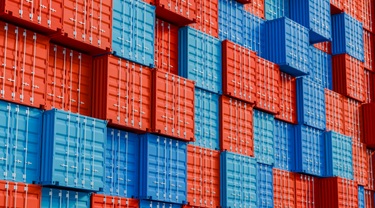As China struggles to recover from its property sector collapse, and much of the world eases into a soft landing, ample global supplies have helped bring most commodity prices down from their recent 2022 peaks. While longer-term structural concerns remain around issues, like global food security and availability of the metals and minerals required to fuel the energy transition, near-term supply-demand pressures have eased.
The Bank of Canada’s Agriculture Commodity Price Index is down 26%. Meanwhile, concerns around oversupply in commodities such as copper, cobalt, nickel and lithium have caused their prices to retreat. We’ve already written extensively about energy and how, despite war in the Middle East, severe disruptions through the Suez Canal, ongoing restrictions on Russian supplies and OPEC (Organization of the Petroleum Exporting Countries) production cuts, spare capacity has kept the price of oil comfortably below $100 per barrel.
But there are notable outliers to this trend. The price of gold is up nearly 35% this year, hitting multiple all-time highs in October alone, with seemingly no end in sight. Why is that?
Well, for one, new buyers with deep pockets and deeper purpose have entered the market. In addition to traditionally strong retail activity in countries, like China and India, central banks have significantly increased their market presence. This shift is driven by a desire among many countries to gradually diversify their official reserve holdings away from the U.S. dollar. Increased geopolitical fragmentation and the U.S. response to Russia’s invasion of Ukraine have led many of these countries to explore alternatives to a dollar-based payments system. As a result, central bank gold buying surged 140% in 2022, with volumes holding steady last year and on pace for another solid year in 2024.
While we’re on geopolitics, it’s important to remember that throughout the ages, and across the rise and fall of empires, gold has always maintained its lustre as a store of wealth. With war in Europe and the Middle East, escalating tensions in the South China Sea, great-power competition across a range of theatres and political polarization in many countries, it’s no surprise that gold has regained its allure.
You should also check out
With timely insights and financial analysis from our experts, Export Development Canada can help you enter new markets, grow your global business, and reduce risks with confidence.
But surely, gold isn’t the only safe bet out there, is it? For investors, bonds (especially those of more credit-worthy governments and corporations) offer a decreased chance of losing your investment relative to other financial assets and provide regular cash flow. But, as central banks begin to cut interest rates and that cash flow is squeezed, the yellow metal shines bright for those seeking safe-haven investments in turbulent times. The U.S. Federal Reserve’s jumbo rate cut in September, along with cuts by other major central banks, including the People’s Bank of China, was just the push many investors had been looking for.
Additionally, on Oct. 15, the International Monetary Fund (IMF) warned that it expects global public debt to hit US$100 trillion in 2024, and account for 100% of global gross domestic product (GDP) by the end of the decade, led by the U.S. and China. With many already worried about public sector debt dynamics, the data raise questions about government debt sustainability and the risk-free nature of bonds versus the alternatives. Increases in government spending in this year of elections also raise concerns about renewed inflation. Higher inflation, too, increases demand for gold, as a reliable, time-tested measure of value.
Lastly, FOMO. With all signs pointing in gold’s direction, the market’s fear of missing out is the most powerful of all forces. Gold’s 20% surge between November 2022 and November 2023 earned it the support needed to jump another 35% by November of this year.
The bottom line?
The surge in gold prices over the last two years, and this year in particular, has been staggering. But when we examine the confluence of forces at play, it makes sense. Central bank gold buying and trends toward de-dollarization, political volatility, the monetary policy pivot, concerns over government debt sustainability and inflationary spending, and the fear of missing out can each be powerful catalysts on their own.
So, what comes next? We don’t believe that these issues will fold neatly back in their boxes with the turn of a calendar page, keeping prices elevated. But, as central bank purchases pull back with higher prices and speculative activity cools, we expect price increases to moderate in 2025. At the same time, higher returns should encourage production and mining expansion, restoring some normalcy into the market as we move into 2026.
This week, a very special thanks to Ian Tobman, manager of our Economic and Political Intelligence Centre.
As always, at EDC Economics, we value your feedback. If you have ideas for topics that you’d like us to explore, please email us at economics@edc.ca and we’ll do our best to cover them.
This commentary is presented for informational purposes only. It’s not intended to be a comprehensive or detailed statement on any subject and no representations or warranties, express or implied, are made as to its accuracy, timeliness or completeness. Nothing in this commentary is intended to provide financial, legal, accounting or tax advice nor should it be relied upon. EDC nor the author is liable whatsoever for any loss or damage caused by, or resulting from, any use of or any inaccuracies, errors or omissions in the information provided.





